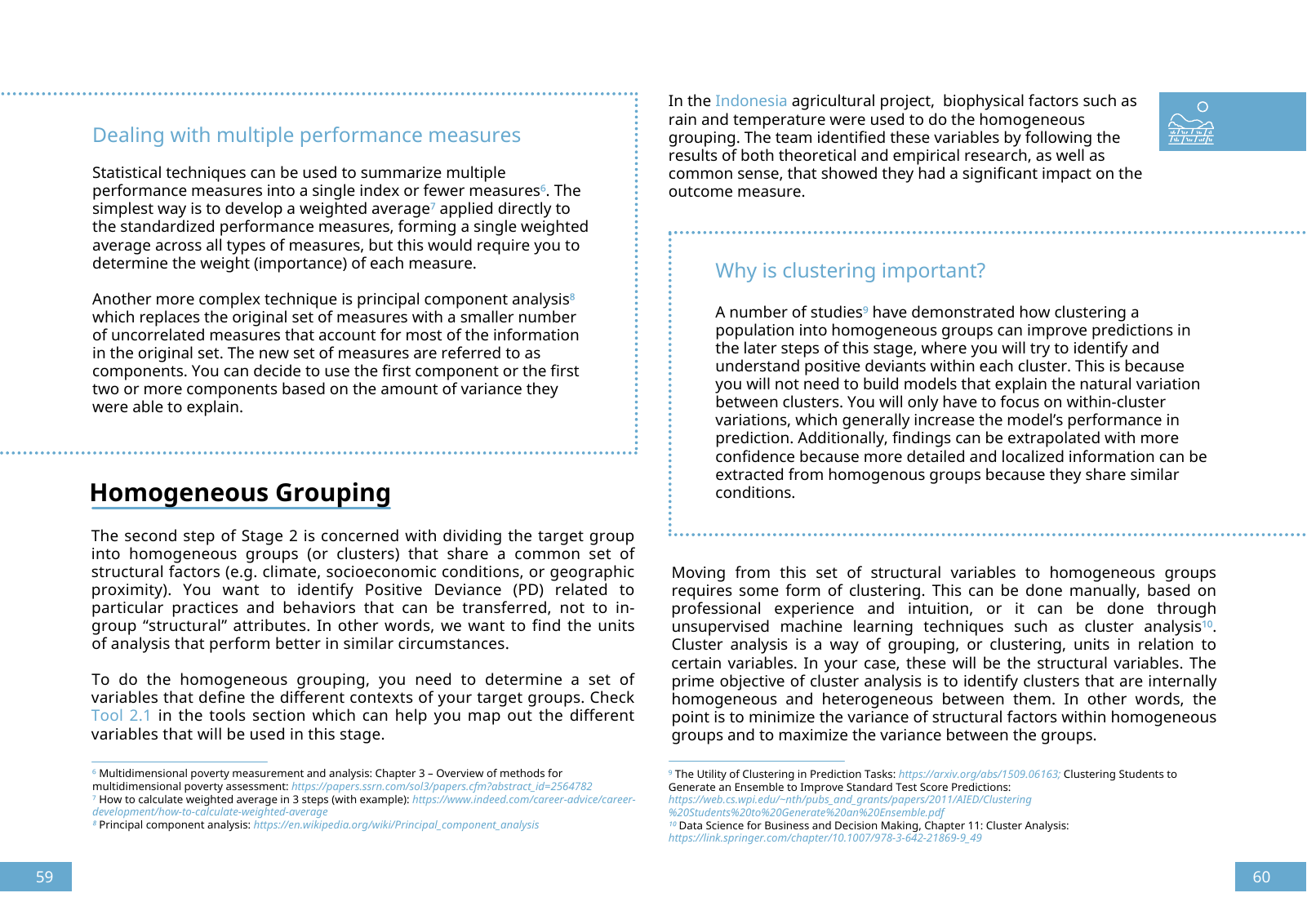Homogeneous Grouping Multidimensional poverty measurement and analysis Chapter 3 Overview of methods for multidimensional poverty assessment https papers ssrn com sol3 papers cfm abstract id 2564782 How to calculate weighted average in 3 steps with example https www indeed com career advice career development how to calculate weighted average Principal component analysis https en wikipedia org wiki Principal component analysis Moving from this set of structural variables to homogeneous groups requires some form of clustering This can be done manually based on professional experience and intuition or it can be done through unsupervised machine learning techniques such as cluster analysis Cluster analysis is a way of grouping or clustering units in relation to certain variables In your case these will be the structural variables The prime objective of cluster analysis is to identify clusters that are internally homogeneous and heterogeneous between them In other words the point is to minimize the variance of structural factors within homogeneous groups and to maximize the variance between the groups Dealing with multiple performance measures Statistical techniques can be used to summarize multiple performance measures into a single index or fewer measures The simplest way is to develop a weighted average applied directly to the standardized performance measures forming a single weighted average across all types of measures but this would require you to determine the weight importance of each measure Another more complex technique is principal component analysis which replaces the original set of measures with a smaller number of uncorrelated measures that account for most of the information in the original set The new set of measures are referred to as components You can decide to use the first component or the first two or more components based on the amount of variance they were able to explain In the Indonesia agricultural project biophysical factors such as rain and temperature were used to do the homogeneous grouping The team identified these variables by following the results of both theoretical and empirical research as well as common sense that showed they had a significant impact on the outcome measure The second step of Stage 2 is concerned with dividing the target group into homogeneous groups or clusters that share a common set of structural factors e g climate socioeconomic conditions or geographic proximity You want to identify Positive Deviance PD related to particular practices and behaviors that can be transferred not to in group structural attributes In other words we want to find the units of analysis that perform better in similar circumstances To do the homogeneous grouping you need to determine a set of variables that define the different contexts of your target groups Check Tool 2 1 in the tools section which can help you map out the different variables that will be used in this stage Why is clustering important A number of studies have demonstrated how clustering a population into homogeneous groups can improve predictions in the later steps of this stage where you will try to identify and understand positive deviants within each cluster This is because you will not need to build models that explain the natural variation between clusters You will only have to focus on within cluster variations which generally increase the model s performance in prediction Additionally findings can be extrapolated with more confidence because more detailed and localized information can be extracted from homogenous groups because they share similar conditions The Utility of Clustering in Prediction Tasks https arxiv org abs 1509 06163 Clustering Students to Generate an Ensemble to Improve Standard Test Score Predictions https web cs wpi edu nth pubs and grants papers 2011 AIED Clustering 20Students 20to 20Generate 20an 20Ensemble pdf Data Science for Business and Decision Making Chapter 11 Cluster Analysis https link springer com chapter 10 1007 978 3 642 21869 9 49 59 60

Hinweis: Dies ist eine maschinenlesbare No-Flash Ansicht.
Klicken Sie hier um zur Online-Version zu gelangen.
Klicken Sie hier um zur Online-Version zu gelangen.